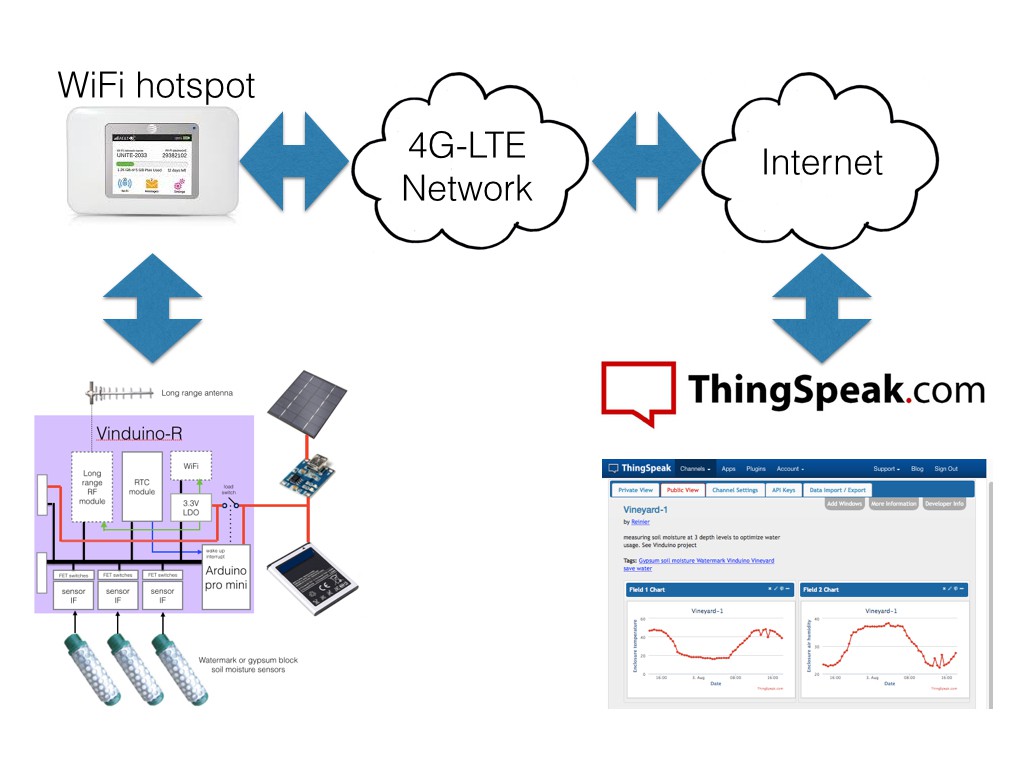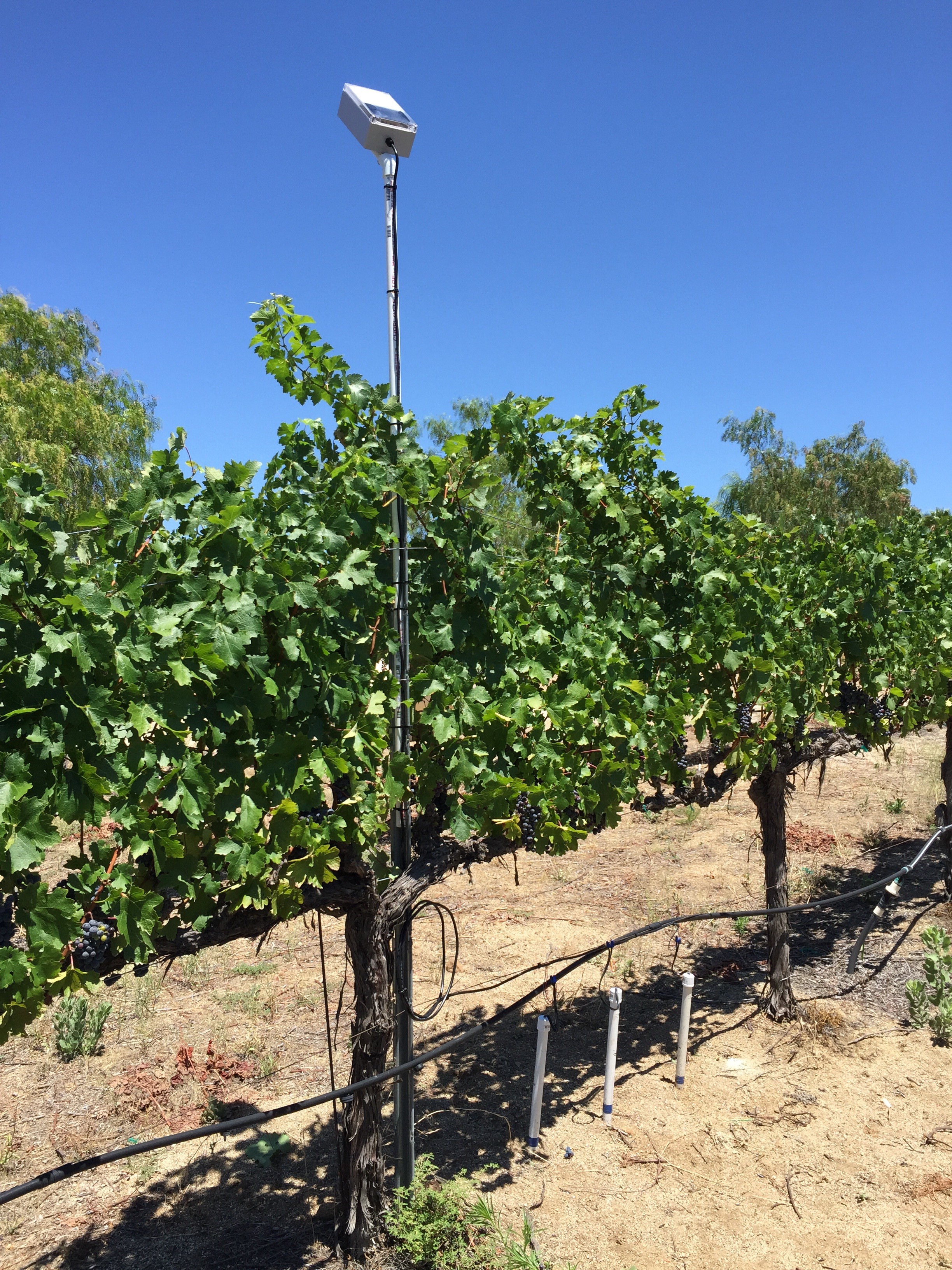Last year we used 441 HCF (hundred cubic feet = 748 gallon) irrigation water in July.
This year we used 295 HCF in the same period. That's an encouraging 33% less, and a reduction of more than 100,000 gallon.
Yesterday, I installed the first Internet sensor node in the vineyard, and now can receive live soil moisture data from the vineyard!
Later than I wanted, unfortunately I had issues with unreliable WiFi connections. Exchanging the Arduino and ESP8266 WiFi module did not help. In the end I solved by using another Vinduino-R board that has been operating stable for several months.
The Vinduino node connects to a WiFi hotspot, that connects to the Internet via the 4G mobile phone network.
The data is sent to the ThingSpeak.com web site, providing a nice graphical presentation of data trends.
Live data at the following link: https://thingspeak.com/channels/37248

First data coming in already provides new insights. The deepest sensor shows a high water content. The sensors in the active root zone are significantly dryer. The amount of water is sufficient, just the vertical distribution is not optimal.
That is not how I envisioned it. Nevertheless very useful information.
Further "tuning" of the irrigation may be required, with potential for further water saving. Also the position of the irrigation drippers may be too far from the sensors to correctly monitor vertical transition of the water through the soil. Sufficient food for thought :-)
To monitor the internal "health"of the system, there is a DHT-11 sensor that reports the temperature and relative humidity level inside the enclosure. Li ion batteries are not supposed to be charged at temperatures over 65C. There is no protection built in the charger, so I keep an eye on the temperature, just in case.
When the enclosure leaks during rain or vineyard spraying operations, I would be able to detect the humidity going up and take care of it before the electronics get irreversibly damaged.
Battery voltage is a useful datapoint for a solar operated node. With the Arduino you can measure the supply voltage without any external components needed!! Voltage varies between 3.9 and 4.2 V, so the battery charger and solar cell seem to be working OK.
Below picture shows the installed Vinduino node, also showing the 3 connected gypsum soil moisture sensors.

 Reinier van der Lee
Reinier van der Lee
Discussions
Become a Hackaday.io Member
Create an account to leave a comment. Already have an account? Log In.